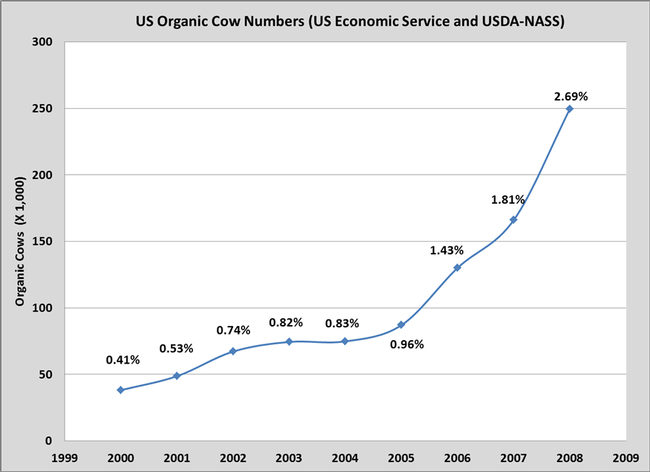UC Blogs
Indiana Jones of Gardening
Call me the Indiana Jones of gardening, but I wanted some adventure from my summer garden. I wanted to discover something “new” that was old (I hear that line from the movie ringing in my head, “It belongs in a museum!”). Among our adventures were the following:
The Heirloom Sweet Chocolate Pepper. This is a brown-skinned pepper at maturity, which starts out green, and is supposedly red fleshed on the inside (kind of like those glowing stones from the “Temple of Doom”). It is said to taste sweeter than the average bell pepper. Of course, it’ll add color to any salad and one review I read said it freezes well for winter use. You’ll see a picture of my plant below of a mature brown one and a “newbie” green one behind it.
The Psidium 'Lemon Yellow', or Lemon Guava was another adventure. Maybe you’ve heard of the Strawberry Guava Tree, well here is its cousin. Like Indiana in “The Last Crusade” looking for a golden statue, these yellow treasures make their trip from South America too. The little fruits are prolific on it, and I think we were just waiting for a bit more sun and warm weather to ripen them up so we’ll be able to reap our golden reward. We have it in a container and everything I’ve read says it’ll be fine there for quite a while.
Another veggie that I discovered was Black Spanish Radish. I found the seed packet hidden in a huge seed display at a local discount store. As you’ll see by the picture these didn’t get too big. The packet didn’t exactly “map out” any details, so I planted them like any other radish. As I’ve recently found out though, they are a winter variety and that could attribute to them not reaching their potential. They are definitely black though. That isn’t mud you’re seeing, that is the skin color! Well, the only “Jones” reference here is that apparently, they have been used medicinally by other cultures for thousands of years, and we all know Indiana was always eating or drinking some kind of concoction to cure something or protect him from something. I don’t know what they’d cure, but the ones that came from our garden sure have a “bite” to them! They start out with a regular radish flavor, and the heat builds from there.
So join me on an adventure in the garden this summer. It might be a little more relaxed than running from gigantic boulders or dodging poison-tipped arrows, but at least we get to wear cool hats!

Sweet Chocolate Pepper. (photos by Patti Brantley)

Spanish Black Radish.
UC scientists wrestle with weed control in organic alfalfa
During the 2000s, organic milk production was one of the fastest growing segments of organic agriculture in the United States, according to a USDA Economic Research Service publication Characteristics, Costs, and Issues for Organic Dairy Farming. In 2008, about 3 percent of the nation's cows were managed organically.
Among the conditions necessary for a cow to produce organic milk, she must eat only organic feed or browse on organic pasture for at least the previous 36 months. However, dairy producers have found that producing or sourcing organic feed – which must be grown with no synthetic fertilizers, insecticides or herbicides – is challenging. Recently organic alfalfa made up nearly 1.4 percent of U.S. alfalfa hay production, up from .5 percent in the early 2000s.
Dan Putnam, UC Cooperative Extension specialist in the Department of Plant Sciences at UC Davis, an alfalfa expert, said one key obstacle for organic alfalfa producers is weed management. Putnam put together a team of alfalfa hay experts to conduct an alfalfa weed management trial at the UC Kearney Agricultural Research and Extension Center, where 10 acres are set aside to research organic production.
In 2011, Putnam; Carol Frate, UCCE advisor in Tulare County; and Shannon Mueller, UCCE advisor in Fresno County, experimented with timing seeding and early clipping to manage organic alfalfa in a weedy field.
“Alfalfa can be planted from early September all the way through the fall and winter to early spring, depending on weather patterns,” Putnam said. “Many farmers plant in late November and wait for rain to bring the crop up. Other options are irrigating the crop up in early fall or waiting till early or late spring to plant the crop. All of these strategies have implications for weed management.”
The late November planting is quite common since, compared to a September planting, it saves farmers the trouble of putting out sprinklers. However, late fall plantings failed in this experiment.
“We had a lot of weed intrusion at that point as well as cold conditions for alfalfa growth, so the stands were poor,” Putnam said.
The earlier planting also had weed intrusion, but the researchers clipped the field when the alfalfa was 10 to 12 inches high in early spring. The clipping cut back weeds that were overtopping the alfalfa, giving an advantage to the vigorous young alfalfa seedlings.
An early spring planting after tillage to destroy weeds also resulted in a good stand, but some production was lost in the first year compared with early fall plantings.
“Many growers are starting to realize that early fall (September/October) is a better time to start their alfalfa crops,” Putnam said. “With organic growers, it is even more important to pay attention to time of seeding because they have so few weed control options.”
While this research is conducted on organic alfalfa, Putnam said the results are also applicable to conventional alfalfa production, which represents more than 98 percent of California's total alfalfa crop.
“Timing has a profound effect on the first-year yield and health of the crop and its ability to compete with weeds,” he said.
Putnam, Mueller and Frate will share more information about the organic alfalfa trial during a field day at Kearney, 9240 S. Riverband Ave., Parlier, from 8 a.m. to 12 noon Sept. 5. The field day will feature the organic production trials, alfalfa variety trials, sorghum silage and nitrogen trials, and optimizing small grain yields. Other topics will be alfalfa pest management, irrigation and stand establishment.
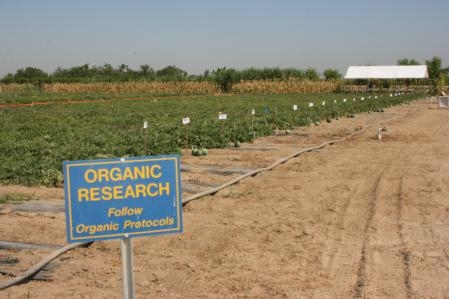
Ten acres at Kearney are set aside for organic research.
These Colors Didn't Run
We've seen bumble bees, honey bees, sweat bees, wool carder bees and syrphid flies topple into our swimming pool, but never an alfalfa...

Alfalfa butterfly, Colias eurytheme, lands in a swimming pool. (Photo by Kathy Keatley Garvey)
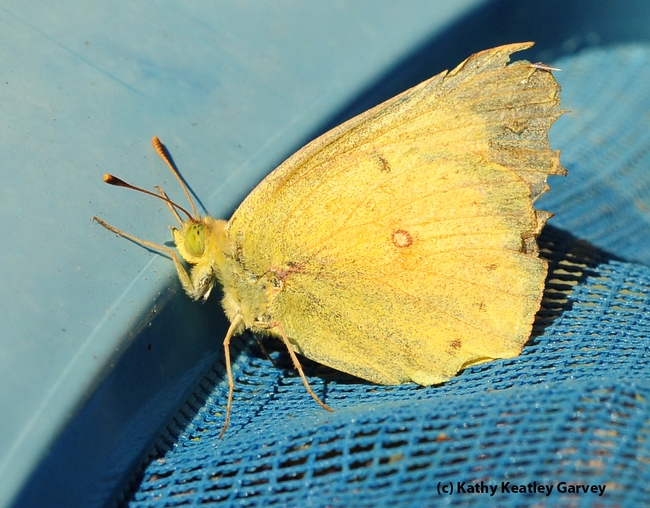
Fished out of the pool, the alfalfa butterfly rests on the net. (Photo by Kathy Keatley Garvey)
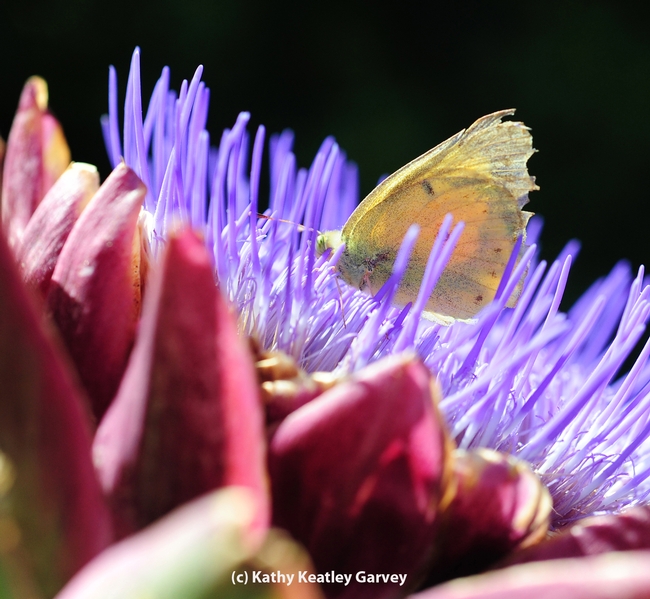
Placed atop a flowering artichoke, the alfalfa butterfly dries its wings. Several minutes later it fluttered away. (Photo by Kathy Keatley Garvey)
California's dry winter is leaving west side cattle hungry
The long rainless winter resulted in grass growth on the west side of the San Joaquin Valley about 80 percent less than usual, reported John Holland in the Modesto Bee. Spring rain pushed somewhat more growth on the valley's east side, which was charted at 55 to 70 percent less than normal.
Theresa Becchetti, UC Cooperative Extension advisor in Stanislaus and San Joaquin counties, a livestock expert, and Diana Waller, district conservationist for the U.S. Natural Resources Conservation Service, reported the conditions in a letter last month to county and federal agriculture officials.
Fall 2011 rain helped germinate seeds, but "unfortunately, that is where it ended," they wrote.
A cattle producer quoted in the story said the poor feed conditions are offset somewhat by beef prices that have remained strong.
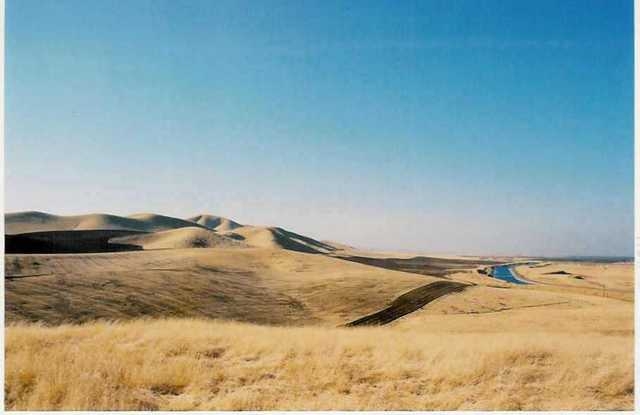
The USDA reported that nonirrigated range condition was poor to fair, with some higher-elevation range in good to fair condition.
Happy Tomatoes=Happy Master Gardener
I know, and you know, this Master Gardener blog space is not intended as a garden brag book. However, I am ignoring that caveat today with a bit of boasting about my middle-of-the-yard tomato patch. Don’t know if any of you remember, but back in April I took a leap of faith and sacrificed a smallish, rock-lined area of my yard — normally planted with ornamentals — to the tomato gods. Mind you, this little spot is pretty much in the center of our back yard. I put in just four tomato seedlings, two determinate, two indeterminate. Then I hoped and prayed and the sun shone, and the wind didn’t blow too hard.
Update: The tomatoes are thriving, and, despite the goofy cages I’ve placed around them, the plants are lovely. I’ve started harvesting the cherry tomatoes, and a few ‘Beefmasters’. The fruit on the ‘Ace’ and ‘Celebrity’ are starting to blush.
This is beyond exciting for me, as I had pretty much given up on getting decent tomatoes from my back yard. I normally plant tomatoes in our two 10-foot by 4-foot raised beds, which are set away from the house on the southwest side of our property. But the last few years, the tomatoes have not done well. I have over-analyzed why this happened — too hot, too cool, too much water, too little water, planting the wrong varieties for our climate (I am SO over heirlooms!) — and I suspect I’ve hit upon the answer: The soil. This year’s relative and so-far success with tomatoes is probably because I have never before grown tomatoes in this spot.
I thought I had been taking good care of the soil in my raised beds. I never planted tomatoes in the same box in consecutive years. I always added plenty of compost and some organic fertilizer prior to planting. I’ve even grown cover crops (fava beans) over several winters. I’m hoping that by leaving the raised beds fallow for a summer, the soil may recover, at least a little.
I’d love some feedback from my fellow Solano gardeners. How do you keep your soil healthy?

Bragging rights? This ‘Beefmaster’ tomato must be closing in on 2 pounds.(photos by Kathy Thomas Rico)
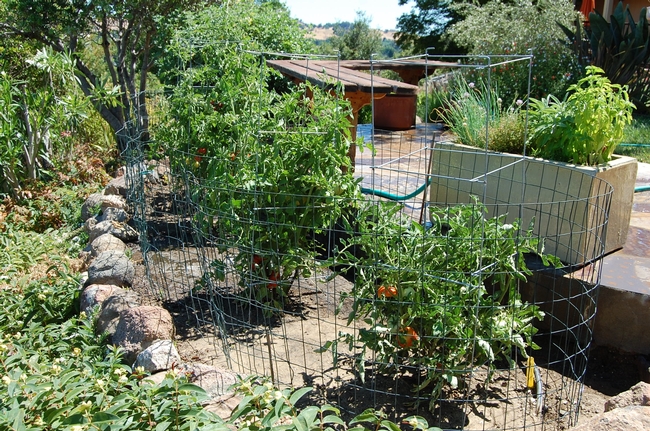
It ain’t much, but it’s thriving: Four tomatoes smack dab in the middle of the Rico back yard.


